- Administrator
- Albums and Singles
 Combining two previous tape releases, with a special edition including a third remix CD, the enigmatic German project defy any sort of classification or clear genre identification. The trio of Christian Dräger, Eric Bauer and Nils Lehnhäuser pull bits of ambient, jazz and drone together without ever fully locking into one style.  The pieces here drastically range from conventional structures to unadulterated, foundation shaking pure bass tones.
Combining two previous tape releases, with a special edition including a third remix CD, the enigmatic German project defy any sort of classification or clear genre identification. The trio of Christian Dräger, Eric Bauer and Nils Lehnhäuser pull bits of ambient, jazz and drone together without ever fully locking into one style.  The pieces here drastically range from conventional structures to unadulterated, foundation shaking pure bass tones.
Most of the pieces that make up this compilation flow almost painfully slow.At times, the three piece (drums, keyboards and bass, as best as I can tell) work together in some sort of clinical deconstruction of the jazz trio ensemble.Rather than the smooth tones and soft rhythms usually associated with the genre, here they are isolated and amplified into pure dissonance."I" from the first disc lets the bass notes reverberate seemingly for eternity, resulting in a violent, vibrating swell of noise.
The band avoids the drums on pieces such as "III," allowing for the individual notes be expanded and sustained as heavily as possible.Disc two's "Dove Gray" has some percussion, but so infrequent that it is hardly able to considered a rhythm, but an accent within an ambient/post-industrial type expanse.The bass is isolated simply into walls of sound on "Pewter Gray Metallic," heavy on the low end but organizationally extremely sparse.
When the three players lock into a more conventional structure, such as the jazzy "I" and "II" from disc 1, or the slowly shuffling "Classic Cream," they create a sound best described as a lounge version of Sunn O))) or Earth’s 2000-era releases.This may seem like a cheesy gimmick, but it is anything but.Rather than corny, it has a disquieting, disturbing feel.The instrumentation is familiar, but played with such a deliberate slowness, it just sounds "wrong" in the best possible way.
A limited run of the double disc set includes a third disc of remixes by OKR.The Spartan elements of Laube's original work are extracted and used to construct extremely different works out of them.The first piece takes the tones and minimal sounds that featured heavily on the first disc and bathes them in layers of reverb, with OKR filling in the mix and giving a light ambient drift sensibility.The second piece piles the layers on more into a dramatic film score type piece, while the third picks up the pace and builds a melodic sequence and synth pads out of the stark tones.
Laube’s sound is one that is extremely familiar and recognizable, but performed and recorded in such a way to be anything but comfortable.It is not exactly dark music, but disquieting and just enough out of place to be unsettling.It is that uniqueness and dissimilarity to anything else that makes it a gripping and occasionally perplexing album.
samples:
 
Read More
- Administrator
- Albums and Singles

Soul Jazz Records' new "Punk 45" album Burn, Rubber City Burn charts the rise of the music scene in the mid-west city of Akron, Ohio at a time when the city and the rubber industry it was associated with was in deep decline.
Featuring a fantastic collection of Akron groups including Devo, The Bizarros, Rubber City Rebels, Jane Aire, Chi-Pig, The Waitresses and more.
The album comes complete with extensive text as well as exclusive photos and original record artwork. CD comes with large booklet and thick slipcase. Vinyl edition is on deluxe gatefold double-vinyl with free download code.
The album follows on from Soul Jazz Records' earlier Punk 45 albums about USA and British punk (Kill The Hippies! Kill Yourself! and There Is No Such Thing As Society) as well as the cover art book Punk 45.
Burn, Rubber City Burn! coincides with the release of as a second album about Ohio's early punk scene, Extermination Nights in the Sixth City – featuring the music scene of nearby Cleveland.
More information can be found here.
Read More
- Administrator
- Albums and Singles

The Summoner comes 4 years since the last Kreng album Grimoire and 3 years since the massive retrospective box set Works for Abattoir Férme 2007-2011. A lot has happened in between, and this new recording can be seen as quite the departure from the aforementioned.
His most personal album to date, The Summoner is based around the 5 stages of mourning and is made after a year of losing several close friends. Hard enough material to work on, he decided to add a 6th stage, entitled "The Summoning" to be able to arrive at the finalé, "Acceptance."
Conjuring up the spirit of György Ligeti, the first half of the album is made up entirely of 12 string players being directed to play around, make noisy clusters and crescendos, moving you between "Denial," "Anger," "Bargaining" and "Depression." In fact, The Summoner is the first Kreng album NOT made by hordes of samples. Music to really dig deep into.
Following into the second part of the album, twists and turns are taken and it's hard to know where exactly you are. The Summoning's haunting organs and smoke-filled chambers lead you in to an earth- shaking wall of guitars, drums and bass courtesy of Belgian doom band Amenra. Leaving you in a state of shock, the album closes in an incredibly heartfelt and quiet way with the fittingly named "Acceptance."
More information can be found here.
Read More
- Administrator
- Albums and Singles
 Polish artist Sebastian Banaszczyk once again demonstrates another leap in compositional development with his Bionulor project. This work, a 3" CD constructed from sounds extracted from Erik Satie's piece of the same name, features some noticeable elements from the original piece. As a whole, however, it has a sound that is unquestionably the work of Banaszczyk.
Polish artist Sebastian Banaszczyk once again demonstrates another leap in compositional development with his Bionulor project. This work, a 3" CD constructed from sounds extracted from Erik Satie's piece of the same name, features some noticeable elements from the original piece. As a whole, however, it has a sound that is unquestionably the work of Banaszczyk.
Broken into seven smaller segments that roughly follow the evolution of the overall piece, Sebastian maintains an overall lighter and sparser sound compared to his earlier works.The first two pieces, VEX.01 and VEX.02 are kept quiet, with a rhythmic surge of sound, never too loud or dense.On the former, Banaszczyk quickens the pace and eventually blends in some odd creaking-like dissonant noises that drop away into the second piece."VEX.02" sees him keeping the tonal swells but with the addition of an infrequent tweeting and high pitched ringing noise towards its conclusion.
The transition to "VEX.03" is more dramatic, with the tones replaced by some low, bass heavy pulses and an occasional fragment of what almost sounds like a traditional keyboard.Textures that seem to be culled from digital interference (likely from a cell phone and computer hard drive) make for texture, paired with the almost-melodic keyboard passages.Banaszczyk keeps these elements in "VEX.04", but here things are kept a bit more quiet, and the overall composition feels lighter and looser compared to the more rigidly academic styles that preceded it.
The final three pieces are shorter and somewhat simpler in their composition."VEX.05" has the same loose feel as before, but sounding like it is made up more of reversed tones from the first piece."VEX.06" has him heavily using the interference noise from before, with an odd clicking sound that at first made me think my headphones had become physically damaged, and the final segment is the most boisterous, with heavy electronic tones and sounds resulting in a less than subtle sound.
Banaszczyk's approach of "sound recycling" could easily result in a mass of formless, distorted noise that could be culled from any source, but his focus on composition and structure prevents that from being an issue.Instead, Vexations has him presenting a clear sense of thematic structure and organization, reverently recalling Satie's source work while still making it very much a Bionulor work.
samples:
 
Read More
- Administrator
- Albums and Singles
 With a true collaboration happening between these two bands, I was not expecting any sort of subtlety or restraint, and my initial thoughts were proven to be true. I was, however, planning to hear a lurching mass of distortion and excruciating vocals, and that is exactly what is here. Neither artist clearly fits into the standard metal templates, and with them working together here, that is all the more apparent.
With a true collaboration happening between these two bands, I was not expecting any sort of subtlety or restraint, and my initial thoughts were proven to be true. I was, however, planning to hear a lurching mass of distortion and excruciating vocals, and that is exactly what is here. Neither artist clearly fits into the standard metal templates, and with them working together here, that is all the more apparent.
Probably the most applicable subgenre that I could use to describe this album would be "doom," but even that is too simplistic of a label.No stoner rock clichés, no cheeseball Satanic imagery, and just a Sabbath influence, rather than emulation define You, Whom I've Always Hated.The lengthy album opener "Her Strongholds Unvanquishable" may begin with oddly processed percussion and squalling guitar, but soon becomes a dense, swampy mess that is heavy on the middle and low end.Dirge-like, with a noisy weird passage in the middle, it has a slowly lumbering pace, but majestically so, with a sense of epic drama.
The short "He Returns to the Place of His Inequity" is the other experimental moment on the record.Melodic guitar, heavily processed random noises and scrapes, and a hushed spoken word vocal track make this song the most out there of the ones on the album.The remaining songs are a bit less experimental, but still enjoyable as hell.The dull thudding drums and overdriven bass of "Beyond the Realms of Dream, That Fleeting Shade Under the Corpus of Vanity" may begin with a caveman stomp, but soon has the two bands constructing a molten lava groove with a wonderfully noisy chorus.
The title of "The Devils of Trust Steal the Souls of the Free" may be one of Thou's nods to 1990s music (being a line from Nine Inch Nails' "Happiness in Slavery") but the sound is very different:a simple, but compelling rhythmic murky pound make up the bulk of the song.More overtly, however, is the two bands' cover of NIN's "Terrible Lie", bearing little resemblance to the original.Like The Body's take on Body Count’s "Cop Killer", the vocals are there and lyrically faithful, but other than a brief shitty electronic sample at the beginning, the sound is anything but Trent Reznor's goth kid mope.Instead it trudges around, filling the originally sparse verse moments of the original with a wall of distorted guitar.
The digital and CD versions of the album also include the previous Thou/The Body collaboration, Released from Love, that was previously only available on vinyl.The sound is unsurprisingly consistent with the newer work:slow sludgy riffs and eventually pounding metal most specifically define "The Wheel Weaves as the Wheel Wills", and "Manifest Alchemy" is all hysterical screaming with the rest sounding like Sabbath played too slow.Another cover, this time of Vic Chesnutt's "Coward" is the standout as far as uniqueness goes.An oddly light guitar melody leads off, pared with thumping drums and distorted bass, and eventually an almost 1980s metal guitar solo that somehow works brilliantly.All the while the uncomfortable vocals are processed to be distant, sounding like someone potentially dangerous screaming outside of the window.
The previous material of Released from Love fits in perfectly with You, Whom I’ve Always Hated very well, sounding like a long album rather than two separate releases combined.It is an ugly, abrasive record that borrows heavily from the world of heavy metal, but with the two bands putting things together just enough off kilter to be appealing to people such as myself, who have only sporadic interest in the genres they may draw from.
samples:
 
Read More
- Administrator
- Albums and Singles
Medical Records continues its exploration of the '90s with a reissue of Laika's 1994 masterpiece Silver Apples Of The Moon, originally released on the iconic Too Pure label.
The members of Laika hailed from various interesting places: Margaret Fiedler was actually born in Chicago, but relocated to London to pursue musical interests and was one of the vocalists and songwriters for Moonshake (also on Too Pure), as well as a previous member of Ultra Vivid Scene. Guy Fixsen was (and still is to this very day), a renowned audio engineer and producer. In fact, he was involved in the infamous production of My Bloody Valentine's Loveless. Bass player John Frenett was also in Moonshake and left that band the same time as Fiedler after their first USA tour. The drummer, Lou Ciccotelli, previously played in Kevin Martin's band God. The band also had a saxophonist, Louise Elliot.
Silver Apples Of The Moon was Laika’s first album and is almost unclassifiable. Taking a very forward-thinking approach, the sound is the result of a very unique equation of live drums/percussion, layered guitars/samples, and diverse analog tones that all fuse together to form a hypnotic polyrhythmic combination that was truly original. Too Pure was known for its cutting edge roster including Seefeel, Mouse On Mars, and Pram. Laika was certainly no exception to these game-changing artists.
The opening track "Sugar Daddy" explodes from the first note into a percussive frenzy that is quite dizzying before it smolders a bit and is layered with various samples that propel the track. "Coming Down Glass" exudes a more mutated trip-hop form with thick, powerful bass lines. Other stand-out tracks include the intense "Red River" and the harder track "44 Robbers." While it is exceedingly difficult to draw any similarities for this album with other artists, one can make loose associations with some of the most challenging percussive experiments of Miles Davis, the brilliant exotica of Martin Denny, and the gut-churning bass magic created by Jah Wobble in early PIL.
Fans of the crucial and long-lasting mark left by the Too Pure artists such as Pram and the like will definitely want this album if they have never heard it. For most fans, the original vinyl LP was not available or accessible (especially in the USA). The masters for which this reissue is sourced were directly transferred from the vinyl master source material (courtesy of Beggars Limited) with the utmost care and quality. The LP jacket features similar original artwork and the LP contains a bonus insert with an engaging interview and write-up by Dave Segal featuring exclusive interviews with Guy Fixsen and Margaret Fiedler.
More information can be found here.
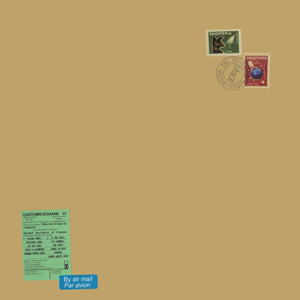
Read More
- Administrator
- Albums and Singles
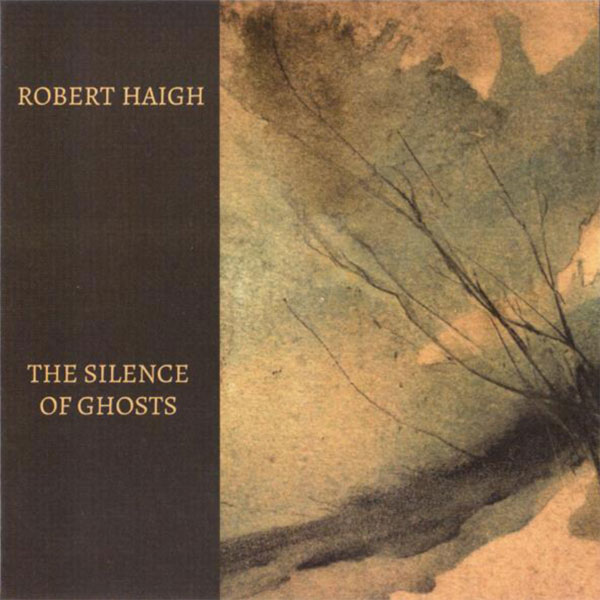
Veteran UK musician/composer Robert Haigh returns to Siren for the first time in three years. Although not a major departure from Haigh's previous work for the label (three albums of piano music released between 2009 and 2011 subsequently known as the Siren Trilogy) this 18 track collection benefits from a wider pallet of subtle sonic textures. With The Silence Of Ghosts Haigh has visioned a journey through strange and beautiful terrain - a topography of fragile melodies and muted discords.
The opening track, Song Of Selene, is a spacious, hymn-like nocturne; hauntingly stark and reflective. In Another Light is an off-beat waltz (3/4, 2/4 time) in which a cyclic theme explores major and minor keys with subtle electronic shimmers. Crooked Mile is a Satie-esque outing featuring an angular melody that climbs through strange modal keys to a discordant destination. The title track The Silence Of Ghosts is achingly melodic, yearning and touching - a eulogy to things that have passed. Where later tracks such as Happening no. 1 and 2 explore Haigh's gift for improvisation, the ghostly Demian Air presents a deep sonic excursion through electronic textures where submerged piano notes echo across alien terrain. The closing track, New Cross Counterpoint, was originally based on a refrain from Haigh's own earlier composition of the same name (from A Waltz In Plain C). The track with its Glass-like arpeggiated piano counterpoint subsequently took on a life of its own but Haigh decided to keep the title anyway since it 'felt right' for the piece.
The Silence Of Ghosts is a mature and deeply reflective work employing Robert Haigh's distinctive subverted melodies and spacious counterpoint. This collection should appeal to fans of Satie, Debussy, Harold Budd, Philip Glass and Max Richter.
Artist Name : Robert Haigh
Title : The Silence of Ghosts
Format : CD (limited edition 700 copies) with miniature jacket sleeve
Catalogue Number : Siren 024
All tracks written and performed by Robert Haigh
Mastered at Skye Mastering by Denis Blackham
Artwork by Andrew Chalk
Sleeve by Saul Haigh
Track listing:
1. Song Of Selene
2. In Another Light
3. Crooked Mile
4. Happening no. 1
5. The Silence Of Ghosts
6. Twelve Tone Poem
7. Fragile Again
8. Lost Rites
9. Pentatonic Dream
10. Crossing The Water
11. Bells Of Lyonesse
12. Second Nature
13. A Cycle Of Flattened Fifths
14. Happening No. 2
15. Thieves Of Symmetry
16. Demian Air
17. Years
18 .New Cross Counterpoint
Read More
- Administrator
- Albums and Singles
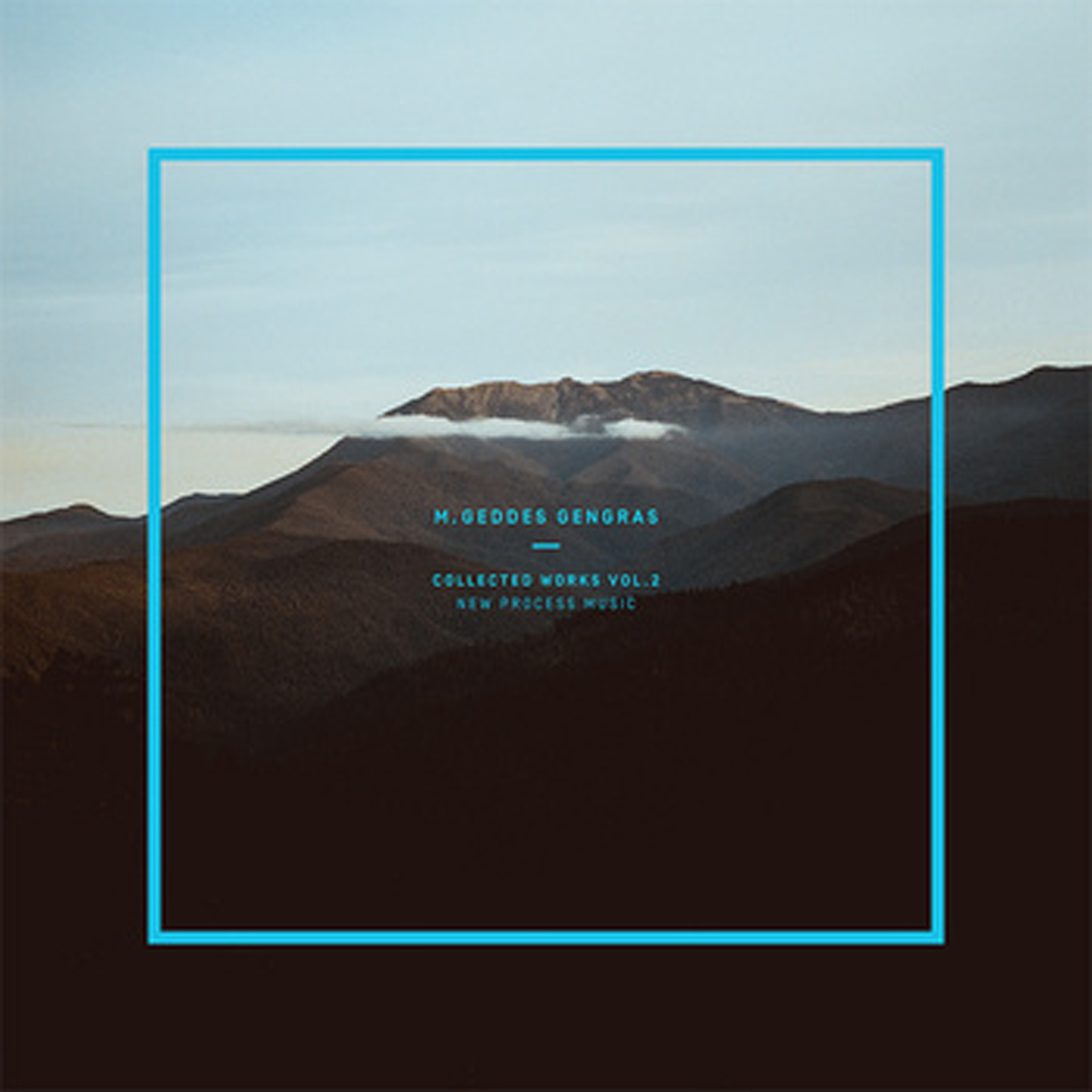 The first volume of Gengras's Collected Works was unexpectedly one of my absolute favorite albums of 2013, so I was looking forward to this follow-up with a great deal of anticipation.  As it turns out, my expectations were way off the mark, as New Process Music is nowhere near as great as its illustrious predecessor.  However, it is equally worth noting that it is not trying to be: this album is a different beast altogether.  While The Moog Years captured Gengras at his haunting, long-form compositional peak, New Process Music instead documents a series of brief experiments in harnessing the squiggling, burbling chaos of a small Eurorack modular synth.  The results are certainly interesting, but anyone seeking something beautiful or sublime should definitely look elsewhere.
The first volume of Gengras's Collected Works was unexpectedly one of my absolute favorite albums of 2013, so I was looking forward to this follow-up with a great deal of anticipation.  As it turns out, my expectations were way off the mark, as New Process Music is nowhere near as great as its illustrious predecessor.  However, it is equally worth noting that it is not trying to be: this album is a different beast altogether.  While The Moog Years captured Gengras at his haunting, long-form compositional peak, New Process Music instead documents a series of brief experiments in harnessing the squiggling, burbling chaos of a small Eurorack modular synth.  The results are certainly interesting, but anyone seeking something beautiful or sublime should definitely look elsewhere.
Unlike The Moog Years, which collected pieces from a number of Gengras's cassette releases, the 8 pieces that comprise New Process Music are all essentially previously unreleased (though Gengras did make them available digitally at one point).  Also, the majority of these pieces were recorded during live shows spanning 2011 through 2012, though they do not sound live.  Essentially, these pieces were all patches that he devised for live performances (enhanced by tape echo), but the raw recordings were all later tweaked and further processed in his studio.  The post-production enhancements generally seem to be peripheral or textural in nature, though "Ricochet" unexpectedly features a distant-sounding interlude of Arvo Pärt’s "Für Alina."  Consequently, the meat of New Process Music is literally just variations on some endlessly repeating patterns: these are Gengras's first "pure" modular synth compositions.
Admittedly, Gengras conjures up some fairly cool patches, particularly with the longer pieces.  The 8-minute "Slider," for example, augments its relentless early Tangerine Dream-style pulse with some squirming and trilling higher notes and a low roar that sounds like it features some buried field recordings.  The twinkling and throbbing "The Last Time We Were Here" again reminds me of early Tangerine Dream, but seems more like the crescendo (and then coda) of one of their heavier pieces.  Another piece that works quite well is the closing "Pure (Reprise)," as it seems much more composed, relaxed, and melodic than anything else on the album.  It is essentially built upon a bittersweet series of swelling notes, but Gengras does a fine job of enhancing them with well-placed sizzles and echoing afterimages.  For someone like me who is not at all a modular synth enthusiast, "Pure (Reprise)" is by far the best piece on the album, as it is the one that feels most like a complete, thoughtfully constructed composition.  I am probably not the target demographic here though, as it seems like New Process Music’s true raison d’être is to delight synth fans with the way that Geddes wrestles with (and willfully causes) entropy.
Ultimately, New Process Music is less a disappointment than it is an album that is just not for me.  While The Moog Years admirably transcended the limitations of the synth revival genre, this album whole-heartedly embraces and embodies them.  It certainly suffers from its severe constraints, but those constraints are all completely by design, so I can hardly gripe about the outcome.  My sole meaningful critique is that most of these pieces lack the momentum and length needed to maximize the power of Gengras's many swooping and blurting variations.  These songs are mostly roiling and untamed right out of the gate, so there is never any real drama or feeling that anything is at stake, whereas Geddes's somewhat similar (but beat-driven) Personable project at times feels like a speeding train about to derail.  These pieces just kind of start and then eventually stop without any rewarding arc, just a bunch of cool technical feats and twists.  That said, New Process Music is still a vibrant and adventurous experiment, so modular synth enthusiasts will probably find a lot to love here, which makes perfect sense: this album is very much just for them.
 
Read More
- Administrator
- Albums and Singles
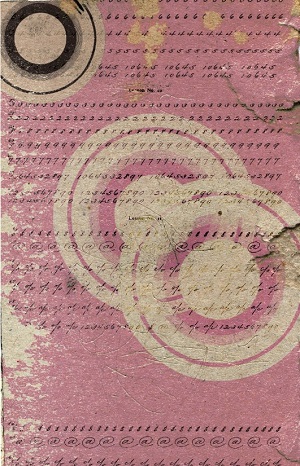 Second in a trio of inaugural cassette releases from Yucatán, México's Lengua de Lava, Harness joins two live performances recorded on the same night at Oberlin College's Fairchild Chapel. The first documents the gutsy force of Joe Panzner and Greg Stuart's machine noise, the second catches Jason Brogan and Sam Sfirri in slow-death mode, twisting canine howls and malfunctioning equipment into avian distress signals and seismic events. Each duo treats their material differently, but the attention paid to physical properties and processes links them. It's a detail picked up and echoed in the superb artwork from Matthew Revert, who channels the corrosive elements of both pieces into a frayed and intricate scrawl.
Second in a trio of inaugural cassette releases from Yucatán, México's Lengua de Lava, Harness joins two live performances recorded on the same night at Oberlin College's Fairchild Chapel. The first documents the gutsy force of Joe Panzner and Greg Stuart's machine noise, the second catches Jason Brogan and Sam Sfirri in slow-death mode, twisting canine howls and malfunctioning equipment into avian distress signals and seismic events. Each duo treats their material differently, but the attention paid to physical properties and processes links them. It's a detail picked up and echoed in the superb artwork from Matthew Revert, who channels the corrosive elements of both pieces into a frayed and intricate scrawl.
"We Didn't Get There Tonight" begins with a short punch of hiss and a steady hum. It sounds like a machine rushing to life and blowing a fuse in almost the same moment. The ensuing brume of sine waves, atomic pops, and broken signals reinforces that image. Panzner and Stuart play with fields of electrical interference and evoke the flashing red lights of agitated equipment on the verge of meltdown. They mix that with the blistering friction of material bodies. Metal grinds against metal in some passages, then compressed air screeches from the speakers and the pocked surface of a worn-out asphalt slab is slammed against the blown-out flutter of busted speaker heads. Glass vibrates against an invisible surface at the end and then the piece comes to a sudden and jarring stop. At first blush the whole thing sounds improvised, but hints of structure seep out of the way Panzner and Stuart react to each other and move from one section to the next. Their interactions are too canny for the whole thing to be completely off the cuff.
The same can be said of Jason Brogan and Sam Sfirri's side, "Wolf." Against the odd sputtering of something that resembles a dot matrix printer, or the digital approximation of a sprinkler system, Brogan and Sfirri place howling wolves, chirping birds, running water, the sound of thunder, and eventually the alien quaver of creatures unknown. By the ten minute mark the initial scene has changed from a pastiche of the familiar to a disconcerting collage of ringing tones and murky field recordings. The conditions for the performance are partially set by the materials Brogan and Sfirri chose to play with, but the outcome depends on the transformation of those materials and the way in which they decide to layer everything. As "Wolf" goes on, that layering becomes sparser and sparser, until a new and artificial (but almost totally convincing) field recordings emerges. A coda is provided in the form of several time-altered howls. They move by so slowly that they register almost as fog horns, or as the mating calls of a whale pod.
Again, the physical elements of the performances come straight to the fore. Both the sound sources and the medium on which they are carried and transformed figure into the way the music is heard. It registers as tactile and malleable, as both music and as something like sculpture seen in four dimensions. The blueprints look rigid, firm, even definite, but as these two concerts demonstrate, the results are more like the shadows of those plans scattered on the crest of time.
samples:
 
Read More
- Administrator
- Albums and Singles
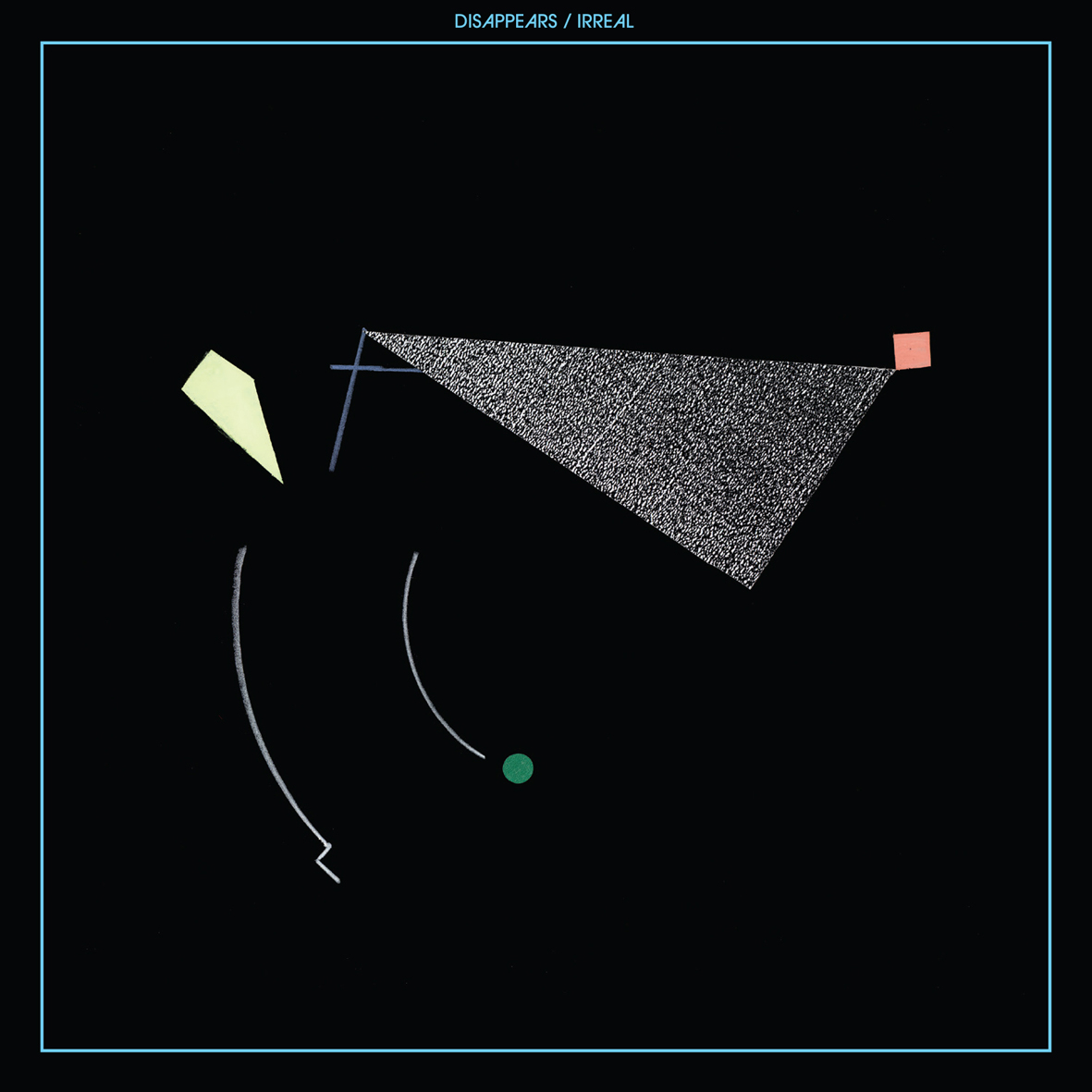 2013's Era was a criminally underappreciated monster of an album that marked an significant, unexpected surge forward in forging a distinctive and wonderful aesthetic all Disappears' own.  I am not sure quite what I expected from this follow-up, but it certainly was not still another dramatic evolution.  That is exactly what I got though.  While I still give Era the edge from both a songwriting and simmering menace perspective, Irreal takes its predecessor's hypnotic, machine-like precision and echo-heavy minimalism and runs with it.  Admittedly, the band's brilliance is primarily stylistic this time around, but Disappears have nonetheless provided yet another thoroughly bad-ass avant-rock tour de force.
2013's Era was a criminally underappreciated monster of an album that marked an significant, unexpected surge forward in forging a distinctive and wonderful aesthetic all Disappears' own.  I am not sure quite what I expected from this follow-up, but it certainly was not still another dramatic evolution.  That is exactly what I got though.  While I still give Era the edge from both a songwriting and simmering menace perspective, Irreal takes its predecessor's hypnotic, machine-like precision and echo-heavy minimalism and runs with it.  Admittedly, the band's brilliance is primarily stylistic this time around, but Disappears have nonetheless provided yet another thoroughly bad-ass avant-rock tour de force.
I have liked (or loved) songs on just about every album that Disappears have released to date, but Era was noteworthy in being the first where the Chicago foursome have truly sounded like only themselves, whereas earlier works always made the band's shifting influences very apparent.  To its credit, Irreal stakes out that particular (and very cool) niche even more emphatically (in fact, one of the opening lines in the title track is "I’m onnnnn....some new trip" delivered with a singularly bad-ass drawl).  Notably, the new trip that Disappears are on sounds increasingly less and less like rock as I know it.  Sure, they look like a rock band and they play all the normal rock instruments, but their strain of rock is now just as informed by dub, experimental music, and minimalism as it previously was by Neu! And GVSB.  Equally important is the fact that Disappears' rhythm section of Damon Carruesco and Noah Ledger embraces an almost machine-like (and non-rock) degree of precision and repetition, though enough fluidity still creeps into their grooves to make them perversely sensual at times.
Aside from their wonderfully simmering, hypnotic pulse, Disappears' other major innovation is their increasingly minimal and non-traditional approach to guitars.  There is almost nothing resembling a chord progression or a riff on this album, aside from maybe the stumbling, broken-sounding harmonic hook of "Irreal."  The only real exception is "Halcyon Days," which unexpectedly boasts some chords and a delay-heavy guitar melody.  In all other respects, Irreal is basically a series of excellent bass-driven grooves colored by plenty of nuanced, effects pedal-heavy guitar textures.  That might not sound all that amazing on paper, but the execution of it all is both ingenious and damn near perfect.  I cannot begin to imagine how much work went into chiseling these songs into their final forms, as few bands that I know of make better use of space than Disappears.  Guitarists Brian Case and Jonathan van Herrick have almost completely carved away any traces of excess or ornamentation in their playing, so on the rare occasions when they actually do open up, it makes a real impact.  Otherwise, they are more than happy to just ride a single note if it suits the song, which I greatly appreciate.  Also, the relative absence of guitars creates room for neat tricks like the echoey dub effects on the drums in "Interpretation" (another highlight).
That said, there are a few ways in which Irreal falls a bit shy of its predecessor.  As noted earlier, the songwriting is a bit weaker than it has been previously.  That seems to be by design (the emphasis is now definitely elsewhere), but it would still be nice to have something as hooky as "Power" or "Pre Language."  The closest Irreal comes to a great single is the title piece, but it is sabotaged by an awkward segue into a three-minute outro.  The other perplexing aspect of this album is that it greatly downplays the presence of frontman Brian Case, as his half-spoken vocals are largely treated like just another instrument.  I do enjoy his disaffected mumbling, but not nearly as much as I like it when he sounds like he has a basement full of dead prostitutes.  That change drives me a little crazy, as he can be one of my favorite frontmen when he is "on" (his vocals on "New House" were the definite highlight of Era for me).  Consequently, I think the pendulum may have swung a bit too far towards "inhuman" with this album–a better balance between cold, minimalist perfectionism, hooks and charisma can definitely be found.  Despite those caveats, however, Irreal is probably still my second favorite Disappears album, as the elements that do work do so extremely well: hooks are nice, but a strong, singular, and beautifully executed artistic statement is quite satisfying too.
 
 
Read More
- Administrator
- Albums and Singles
England / Ohio's Mat Sweet presents his latest album under the Boduf Songs moniker via The Flenser!
Stench of Exist is at once his most accessible and most esoteric work to date; from the opium flow of the tracks, running headily into one another like tributaries to river, to the muted-industrial-electronic-effected drums underscoring the spiraling melodies and fluttering drones, to the clean and rich guitar, abstracted cycles and feedback walls, its whispered doom metal masquerades as a lullaby.
Stench of Exist unfolds languorously, laced with mysterious electronic filigree. Gorgeously intimate, it transforms the minimal into maximal with layers of electro-detritus wreathed in lush guitar strums, street-side field recordings, reverberating pianos and softly crooned vocals. It is a record of rain and cities and nighttime. The collision of arabesque tonalities with electronic sound and ambience brings to mind the promise of Blade Runner—half-asleep at 4:00 A.M. and slightly medicated, with pyramids and flame-spewing cityscapes in downpour glowing against the fluttering eyelids in the almost-dreaming consciousness. A record for saturnine commuters, on headphones, after sunset.
Coming February 2015.
More information can be found here.

Read More

